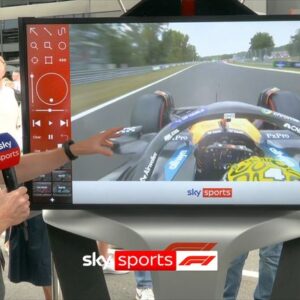
Picture this: you’re standing in a virtual stadium, the crowd’s roar vibrating through your chest, as you watch a quarterback wind up for a game-changing throw. With a flick of your wrist, you place a bet on the next play—will he nail the pass or fumble under pressure? This isn’t a daydream or a sci-fi flick; it’s the electrifying reality of virtual reality sports betting.
Virtual reality (VR) and augmented reality (AR) are tearing up the rulebook of traditional sports wagering, turning it into a pulse-pounding, interactive experience. So, how are these technologies reshaping the way we bet on sports, and what does it mean for the future? Let’s step into this brave new world and find out.
The Rise of Immersive Technologies in Sports Betting
Once confined to gaming and tech demos, VR and AR are now flexing their muscles in the sports betting arena. VR drops you into a fully digital universe—think 360-degree stadiums where you’re courtside or in the stands. AR, on the other hand, spices up the real world by layering stats, odds, and options right into your field of vision. Together, they’re crafting a betting experience that’s light-years ahead of clicking buttons on a screen.
Take platforms like VR Sportsbook or BetOnVR—they’re already rolling out virtual lounges where you can watch live games, hear the crowd, and place bets in real time. According to a 2023 Statista report, the global VR market could hit $87 billion by 2030, with gambling riding a big chunk of that wave.
AR isn’t far behind, with apps like Bet365 experimenting with overlays that let you see live odds while watching a match on TV. This isn’t just a gimmick—it’s a seismic shift in how we experience sports and wagering.
What’s driving the buzz? It’s the thrill of being in the game, not just watching it. VR lets you feel the stakes of every play, while AR keeps you armed with real-time info. It’s betting with adrenaline and strategy dialed up to eleven.
How VR and AR Are Enhancing the Betting Experience
So, what’s it like to bet in this immersive playground? Let’s break it down.
1. 360-Degree Immersion
VR doesn’t just show you the game—it puts you there. Platforms like VR22 let you pick your vantage point: front row at a basketball game, trackside at a horse race, or even hovering above the field. The visuals are crisp, the sound is visceral, and the sense of presence? Unmatched. It’s like the difference between reading about a rollercoaster and riding one—your heart races with every bet.
2. Real-Time Live Betting
Forget waiting for halftime to place your wager. With VR, you’re betting as the action unfolds. During an NFL game, you might gesture to bet on a touchdown as the quarterback scrambles. AR takes it further by projecting odds onto your screen or glasses, so you’re always in the loop. A 2024 Gambling Insider study found that in-play betting now accounts for 60% of online sports wagers—VR and AR are supercharging that trend with speed and flair.
3. Social Vibes in Virtual Spaces
Betting’s better with friends, right? VR makes it happen. Platforms like JeetCity let you hang out in virtual lounges, chat with buddies, and trash-talk over a game—all while placing bets. Customize your avatar, crack a virtual beer, and it’s like a night out without leaving home. It’s a social lifeline that turns solitary wagering into a party.
4. AR’s Real-World Edge
AR shines by blending the physical and digital. Watching a soccer match? Slip on AR glasses, and suddenly, player stats and live odds float beside the action. It’s seamless, intuitive, and keeps you glued to the game. Companies like DraftKings are already testing AR features, hinting at a future where your living room becomes a betting hub.
Here’s a quick comparison of how these techs stack up against traditional betting:
| Feature | Traditional Betting | VR Betting | AR Betting |
|---|---|---|---|
| Immersion | Low—screen-based | High—full environments | Medium—enhanced reality |
| Interactivity | Basic clicks | Gestures, voice commands | Real-time overlays |
| Social Experience | Limited | Virtual lounges | Minimal |
| Accessibility | High—phone or laptop | Medium—needs VR gear | High—works with devices |
The Bigger Picture: Impact on the Industry
This isn’t just a shiny toy for bettors—it’s a goldmine for the industry. Operators are jumping on VR and AR to stand out in a packed market. Immersive platforms draw in newbies and keep regulars hooked with experiences you can’t get elsewhere. Plus, the data pouring in from VR interactions—how long you linger, what you bet on—lets companies fine-tune their game, making every wager feel tailor-made.
The numbers back it up. A 2024 Deloitte report predicts immersive tech could boost the gambling sector’s revenue by 20% over the next decade. But it’s not all smooth sailing. VR headsets can cost $300-$1,000, pricing out casual players. And regulators? They’re scrambling to catch up, wrestling with how to police these virtual worlds for fairness and safety.
Challenges on the Horizon
Let’s not sugarcoat it—immersive betting has its bumps:
- Cost Barrier: A top-tier VR rig isn’t cheap. While prices are dropping (think Oculus Quest 2 at $299), it’s still a leap from free betting apps. Mass adoption hinges on affordability.
- Addiction Risks: VR’s grip is tight—too tight for some. The rush of a virtual stadium could hook vulnerable players. Regulators are pushing for safeguards like session timers, but it’s a work in progress.
- Tech Hiccups: Laggy streams or clunky interfaces can kill the vibe. Operators need hefty investments to keep the experience slick and reliable.
Despite the hurdles, the momentum’s unstoppable. As 5G rolls out and hardware gets cheaper, these challenges could fade, paving the way for a betting revolution.
A Peek Into the Future
What’s next? Buckle up. With 5G slashing latency, VR and AR will run smoother and reach more people. Imagine hybrid setups: a physical sportsbook where you strap on a headset to “visit” the game. Or AI stepping in, analyzing your habits to suggest bets—like a virtual bookie who knows you better than you know yourself.
We might even see fully virtual leagues—think e-sports on steroids—where you bet on digital athletes in VR arenas. The line between reality and simulation? It’s blurring fast. For bettors, it’s a chance to live the game like never before.
My Take: A Personal Spin
I’ll admit—I’m no high-roller. But last month, I tried a VR betting demo at a tech expo. Stepping into a virtual boxing ring, I placed a bet on a knockout as the crowd cheered. The fighter’s sweat glistened, the tension was palpable, and when my wager hit? I whooped like I’d won the title myself. It wasn’t just betting—it was living the moment. That’s the magic VR brings: it’s personal, raw, and ridiculously fun. AR’s next on my list—I’m itching to see how it spices up my Sunday football ritual.
Conclusion
Virtual reality sports betting isn’t a fad—it’s the future. VR plunges you into the action, AR arms you with smarts, and together, they’re rewriting what it means to wager on sports. Sure, there’s work to do on cost, access, and responsibility, but the payoff? A world where every bet feels like a front-row seat to history.
So, what do you think—ready to strap on a headset and dive in? Tried immersive betting yet? Drop your thoughts below, or check out our guide to cutting-edge gambling tech for more. The game’s on, and it’s more immersive than ever.





